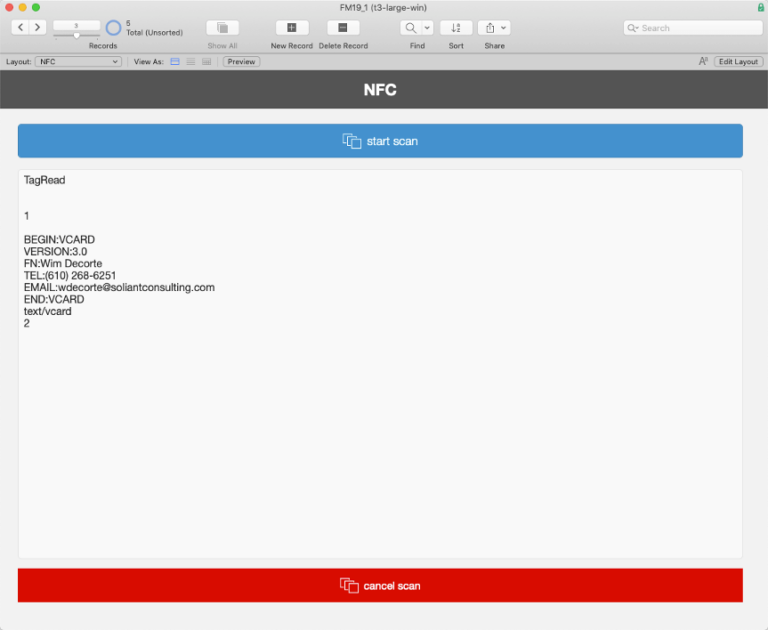

- #FILEMAKER SERVER SIDE SCRIPTS PRO#
- #FILEMAKER SERVER SIDE SCRIPTS CODE#
- #FILEMAKER SERVER SIDE SCRIPTS WINDOWS#
According to the documentation, this should also display errors and fail, however in testing we discovered it did not. Unfortunately, the error in the server logs doesn’t point you directly to that as the source of the problem, but simply reports a permission error.Īnother strange issue we found was that when running the same scripts as a server side scheduled script, the errors did not appear. According to the FileMaker documentation, PSOS and scripts running as a server-side schedule require that any referenced files reside on the same host as the file triggering the script. The problem turned out to be the fact that the situation was a bit of an unusual one where the file running the PSOS script step had external data sources referencing files that resided on separate hosts. Schedule "Nightly Sync ABC_Patients - designer 19" scripting error (723) at "ABC_Sync : Nightly Sync ABC_Patients : 136 : Import Records". Schedule "Nightly Sync ABC_Patients - designer 19" scripting error (200) at "ABC_Sync : Nightly Sync ABC_Patients : 134 : Delete All Records". We checked file access, default logins, privilege groups, and everything seemed to be set up properly. Looking up the error codes (200 and 723) we could see they had to do with permissions, the script was unable to edit, add, or delete records in the target file.
#FILEMAKER SERVER SIDE SCRIPTS CODE#
The Log Viewer showed us the error code along with the name of the script step and the line number of the step in the script. Scripts run by a FileMaker Server schedule use the account specified in the schedule. Use the script debugger, data viewer, and database design report to help. We used the Log Viewer in the FileMaker Server Admin Console to track down the errors. Scripts run by Perform Script On Server use the same account as the client. Includes server-side scripts to automate your system. We discovered the issue when noticing a script run via the Perform Script on Server script step (PSOS) was failing.

Maybe this blog post will help someone catch the same problem a little more quickly. Next, select an optional pre-processing system-level script, an optional post-processing system-level script, or both.Working together today during our weekly dev meeting, the Portage Bay team ran across a slightly obscure requirements issue that took little bit of time for us to resolve, though once resolved the issue was pretty simple. Next, select the database that contains the FileMaker script you want to run, then the script. To create a script sequence, create a scheduled script and specify the type Script Sequence.

#FILEMAKER SERVER SIDE SCRIPTS PRO#
See the script step reference in FileMaker Pro Help. To find out if a FileMaker script step is supported from a FileMaker Server schedule, choose Server for Show Compatibility in the Script Workspace. Use the Script Workspace in FileMaker Pro to build scripts by selecting from a list of supported FileMaker Pro commands, called script steps, and specifying options (if necessary). Scripts can incorporate conditional decisions (if-else statements) and perform repetitive tasks (loop statements). You can schedule these scripts to run during off hours, perhaps before a daily backup. support script parameters and script results up to 1 million characters can access other FileMaker Pro Advanced files only when both of the following are true: the files are on the same host the files were already opened by the client that started the server-side script, or set up with an account name. For example, you can write a FileMaker script to remove duplicate records or to validate the format of phone numbers. The server-side script can use that information in script steps like the Go to Layout script step and Perform Find script step to specify which layout and found set to act on. Next, select the database that contains the script you want to run, then the script.įileMaker scripts can do simple or complex tasks. To schedule a FileMaker script to run, create a scheduled script and specify the type FileMaker Script. System-level scripts can perform operating system level tasks on the primary machine. Next, select the script file you want to run. To schedule a system-level script to run, create a scheduled script and specify the type System Script. Script files must be placed in the Scripts folder on the primary machine in your FileMaker Server deployment. Script sequences that combine a FileMaker script with an optional pre-processing system-level script and an optional post-processing system-level script
#FILEMAKER SERVER SIDE SCRIPTS WINDOWS#
System-level scripts-for example, Windows batch, Perl, VBScript, and AppleScriptįileMaker scripts in databases hosted by FileMaker Server


 0 kommentar(er)
0 kommentar(er)
